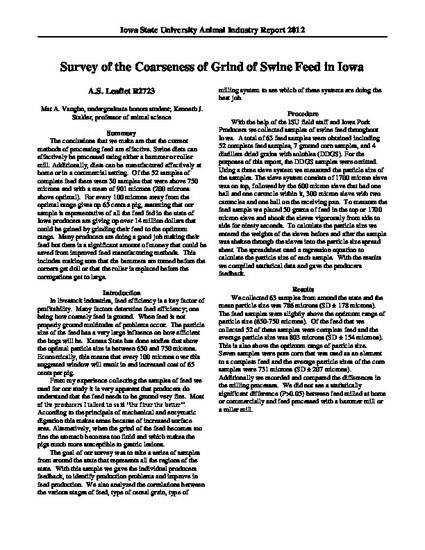
The conclusions that we make are that the current methods of processing feed are effective. Swine diets can effectively be processed using either a hammer or roller mill. Additionally, diets can be manufactured effectively at home or in a commercial setting. Of the 52 samples of complete feed there were 30 samples that were above 750 microns and with a mean of 901 microns (200 microns above optimal). For every 100 microns away from the optimal range gives up 65 cents a pig, assuming that our sample is representative of all the feed fed in the state of Iowa producers are giving up over 14 million dollars that could be gained by grinding their feed to the optimum range. Many producers are doing a good job making their feed but there is a significant amount of money that could be saved from improved feed manufacturing methods. This includes making sure that the hammers are turned before the corners get dull or that the roller is replaced before the corrugations get to large.
Available at: http://works.bepress.com/kenneth_stalder/70/
